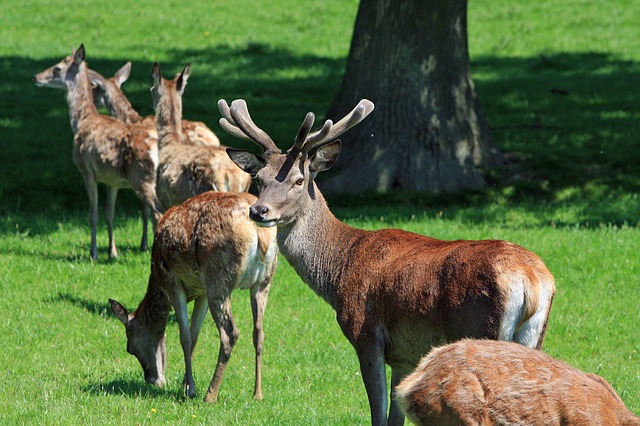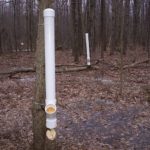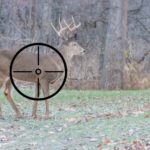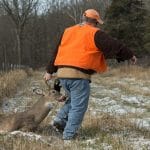Deer feeders can be a great hunting tool if used correctly and if it’s allowed in your state. They pull deer into an area, and they also have the ability to help deer setup their routines around the feeding.
Understandably, most deer prefer to feed in the dark of night, early morning or evening time. So a hunter must remember that a feeder won’t always produce animals during shooting hours.
Stalk Your Target
For proper scouting, when you buy your feeder, you may want to invest in a trail camera or two. This does not only provide you with the knowledge of when the deer are hitting the feed, but also for the trophy hunters out there.
The cameras show you the caliber of bucks in the area as well.
But before worrying about what time the deer might feed or the size of bucks, a hunter must realize that just like any successful business, you must take into account the location, location, location.
If a feeder is placed in a bad area or the setup is poor, then you might as well be tossing money out of your truck window while you are driving down the freeway.
Know Your Game
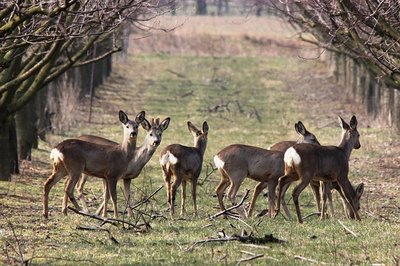
Location
A key factor to remember when setting up a feeder is, first and foremost: are there deer in that area? If there aren’t, regardless of what kind of feed you use, no deer is going to hit your stand and unless tamed, most deer are very skittish when it comes to predators.
They will not go anywhere unless they feel they have some protection. So if you set your feeder up in the middle of a large open field, you probably won’t see much action because the deer will feel vulnerable.
Deer like cover. It gives them a sense of security as any coverage helps protect them. But just the opposite, if you setup your feeder in a small opening or even in some trees, then there is a good chance of receiving the daily visitors you desire.
Trail
Even if there is a chance that deer does not come to a spot that you want to hunt, a method to move deer to that area is possible.
As long as you do your homework and you know of a game trail or a path that they use for travel, you can place a feeder near this route in hopes that the deer traveling day or night will stop by your feed for a quick break.
If you are consistent in maintaining the feeder, then the deer will become accustomed to this spot. Once this happens, you can move the feeder (within reason) to your desired nearby area.
Why? Because the deer will be expecting the feed in that typical location and if all of sudden it is gone, the deer will do a small area search to see if there is more feed.
If you didn’t move the feeder too far, then as soon as they locate the new spot (which they will), you will have a perfect hunting setup at your desired location
Limitations
Most importantly for a feeder setup, is to know your limitations for hunting. If you are going to hunt with a rifle, bow or even crossbow, you must setup your stand and feeder accordingly.
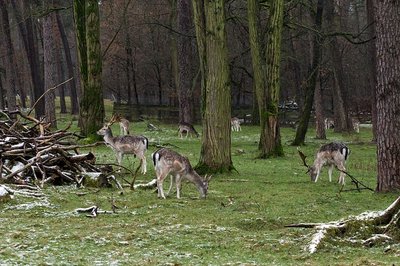
Perhaps you are in an area where you can setup a feeder for archery and rifle. Make sure to look for good strong trees to give you the option of setting up a tree stand.
If there aren’t any trees close by or within your confident shooting distance, check for natural looking ground blinds, or a way to make your store bought ground blind look native to the terrain.
But before you setup your blind or tree stand, be aware of the prevailing wind. Setup so you are downwind from the feeder.
Of course, if you will be rifle hunting, then your setup doesn’t have to be as critical. Just make sure the distance is within your range for accuracy and that you have a good vantage point when it comes to seeing not only your feeder, but also the immediate surrounding area.
Think One Step Ahead
In short, before you purchase a feeder and trail cameras, make sure there are deer in the area where you want to place your stand.
You will be hunting that spot, so set that up regardless of the direction where the deer comes in. You will have the vantage point, whether by tree stand or ground blind.
Check the prevailing wind direction so the deer won’t smell you before you even see them.
Last, but not least, be sure that wherever you setup, it will be a comfortable and an ethical shot for your skill level. And enjoy every minute of what nature has to offer!

